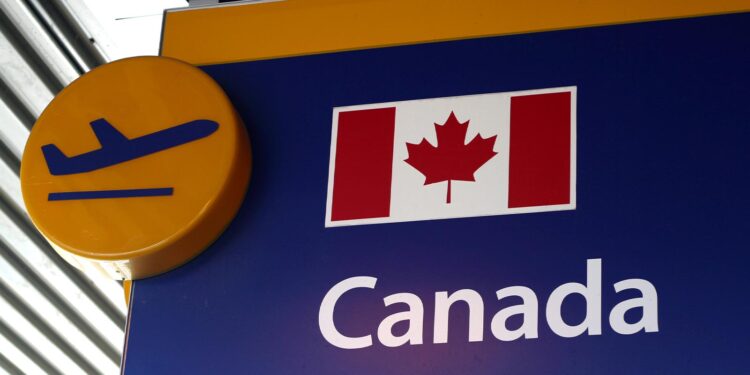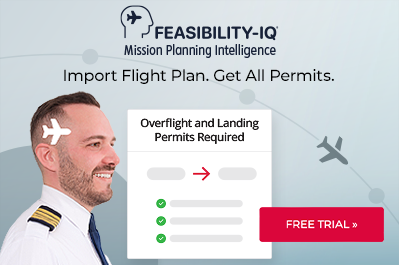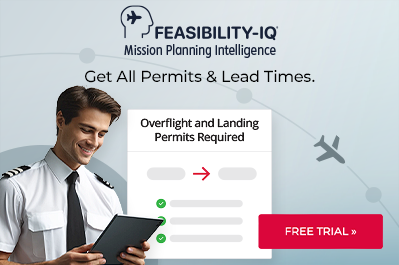Explaining CANPASS for Business Aircraft Operations to Canada

The Canadian Passenger Accelerated Service System (CANPASS) is an efficient and user-friendly method of reporting international general aviation (GA) arrivals into Canada. It has the benefit of allowing you to land at any airport of entry (AOE), as well as certain CANPASS-only airports, even during hours that customs, immigration, and quarantine (CIQ) clearance is not normally available. Be advised that the reporting process varies depending upon type of flight, number of passengers, and whether or not passengers/crew are registered CANPASS users.
The following is an overview of what you need to know when operating to Canada:
1. Entry requirements for Canada
Travelers on private non-revenue aircraft carrying no more than 15 people (including crew) in most ports, or 39 people onboard in the big eight airports –Vancouver, Calgary, Edmonton, Winnipeg, Toronto, Ottawa, Montreal, Halifax – must report to Canada Border Security Agency (CBSA) using a telephone clearance reporting system. If you’re not registered with CANPASS you must pre-notify CBSA’s Telephone Reporting Centre (TRC) and land at an approved airport of entry (AOE) during CBSA operating hours. Whether you’re a CANPASS member or not, the pilot in command (PIC) must always contact CBSA at the destination AOE, in advance, to arrange CIQ clearance on arrival when any of the following situations arise:
- Aircraft is carrying more than 39 people onboard in the big eight airports (Vancouver, Calgary, Edmonton, Winnipeg, Toronto, Ottawa, Montreal, Halifax)
- Aircraft is carrying more than 15 people (including crew) for most other ports
2. General reporting requirements for non CANPASS members
The PIC must call the TRC at 1-888-226-7277 (1-888-service) at least two hours prior to departure, but no more than 48 hours before flying into Canada. If you cannot get through on this number, you may also call 1-905-679-2073. Information required by the TRC includes:
- the estimated time of arrival (ETA)
- the aircraft tail number/registration number
- the full name, date of birth, and citizenship of all persons on board
- if applicable, the passport and visa information of persons onboard the aircraft – including the crew
- the destination, purpose of the trip, and length of stay in Canada for non-residents
- the landing point (must be a designated airport of entry or CANPASS-only airport)
- the length of absence for each passenger who is a returning resident of Canada
- a declaration of all goods being imported, including firearms and weapons
- a declaration of all currency and/or monetary instruments totaling $10,000 CAN or above
- a report of all repairs or modifications made to goods (including the aircraft) while outside Canada for returning residents of Canada
If you’re not a CANPASS member you may only land at approved AOEs during normal CIQ hours, unless other arrangements have been made directly with the local CBSA office. If you need to divert, due to weather or other circumstances, to a non-AOE or an AOE outside of normal CIQ hours, the PIC must call 1-888-226-7277, the nearest CBSA or Royal Canadian Mounted Police (RCMP) office. Depending on your circumstances you may be cleared over the phone or you may be requested to wait for arrival of a CBSA officer upon landing.
3. CANPASS program options
CANPASS offers two programs – Private Aircraft and Corporate Aircraft – that private operators, but not charter operators, may use. The Private Aircraft program requires all onboard to be registered with CANPASS. The Corporate Aircraft program, on the other hand, permits up to four non-CANPASS registered travelers to be onboard and provides operators additional options with greater flexibility on where and when you may land.
4. Qualifying for CANPASS
CANPASS Corporate Aircraft and Private Aircraft programs are membership based and available to citizens or permanent residents of Canada or the U.S. who’ve lived in Canada or the U.S. continuously for the past three years. All members must be admissible to Canada under applicable immigration laws. All information submitted must be true and accurate on the application. If you’ve been convicted of a criminal offense, for which a pardon has not been granted, or have been subject to a CBSA customs seizure within the past five years, you are not eligible for CANPASS.
5. CANPASS Private Aircraft program
The CANPASS Private Aircraft program allows the operator to land at any AOE at any time the airport is open, regardless of CIQ hours. You may also land at designated CANPASS-only airports. Reporting requirements are the TRC procedures listed above in Section 2. Crew and passengers must stay at the point of arrival until the ETA reported to TRC has elapsed. If ETA changes by more than 30 minutes or if there are changes to the point of arrival, list of passengers, or declarations, the pilot must advise TRC at least two hours prior to departure.
6. CANPASS Corporate Aircraft
The CANPASS Corporate Aircraft program has the additional benefit that up to four non-CANPASS travelers may be on the flight. Non-CANPASS members may apply for temporary CANPASS Corporate Aircraft authorization, so long as they can demonstrate a work-based relationship with the corporation and meet citizenship/residency requirements as program members. Family businesses can apply to the Corporate Aircraft program, so long as the business is incorporated. Neither the CANPASS Corporate Aircraft nor Private Aircraft programs are available for chartered flights. Corporations may, however, use leased or rented aircraft rather than owned aircraft.
7. Pilot responsibilities
To use CANPASS the PIC must ensure all onboard have required travel documents to enter Canada and are holding valid CANPASS Corporate Aircraft memberships or temporary CANPASS authorizations. Although the PIC is required to call CBSA with all passenger information and declaration of goods, it’s the individual passengers who are ultimately responsible for complying with all CIQ requirements. Upon landing the crew/passengers remain with the aircraft until the ETA reported to TRC has elapsed. At this point, assuming no CBSA agent is waiting, passengers/crew may proceed to their final destination without making a second call to TRC.
8. Registering for CANPASS
It generally takes four to six weeks to register and be approved for CANPASS. You’ll send in Form 8672, pay a processing fee of $40 CDN per person and provide evidence of citizenship and/or permanent residence in order to qualify. Note that Canadian and U.S. citizens/residents who have certain infractions on their records – including minor past drug possession charges and/or certain impaired driving offences – may be ineligible for CANPASS. CBSA looks closely at any criminal history of applicants and even small past offences may disqualify applicants from being part of the program. CANPASS membership is good for five years, at which point you must re-apply for membership.
9. Reporting upon landing
The PIC should call CANPASS at 1-888-226-7277 upon landing in Canada and prior to opening any aircraft door. However, in some cases you may be told that you do not need to call, as you’ll be met by a CBSA agent. Be aware that if CBSA wants an agent to meet your flight this could limit where you may land and when. In some cases you may be told that you do not need to call upon landing and may proceed to your final destination, as long as you remain with the aircraft until the reported ETA to TRC has elapsed.
10. Potential penalties
While CANPASS is a user-friendly reporting and clearance process, CBSA has the ability to issue penalties for lack of provided information or not reporting within the required lead time of at least two hours prior to departure and not more than 48 hours prior to entering Canada. Any contravention of the CANPASS program or regulations can result in detention, seizure of the aircraft, fines, criminal prosecution, and imprisonment.
11. Additional considerations
If you have any passengers onboard who are not CANPASS Corporate Air members, and do not have temporary CANPASS authorization, the aircraft may only land at an AOE during normal CIQ hours. Operators with weapons, ammunition, or pets onboard must provide prior advance notification and full details in order to use CANPASS, but the reporting procedure is not onerous. You may, for example, need to provide pet vaccination records or weapon serial number and permits, prior to being cleared for a CANPASS arrival in Canada.
Conclusion
It’s important to be aware that it’s the PIC who must call to report a CANPASS arrival and this must be done within the 2-48 hour window prior to entry into Canada. Also, for private non-revenue operators there are programs that allow for greater flexibility when entering the country.
Questions?
If you have any questions about this article or would like assistance with Canadian customs requirements, contact me at juanmuniz@univ-wea.com.




